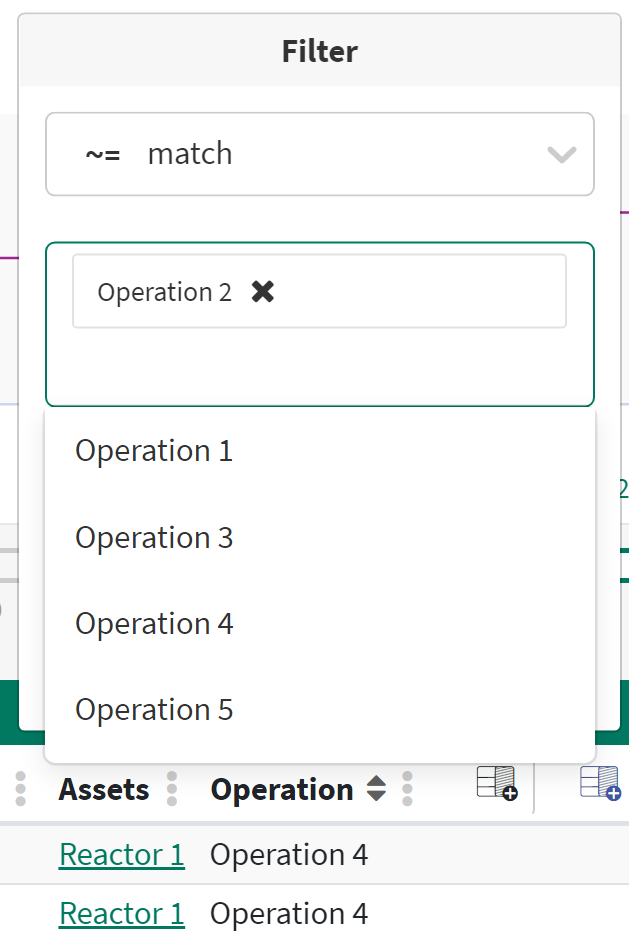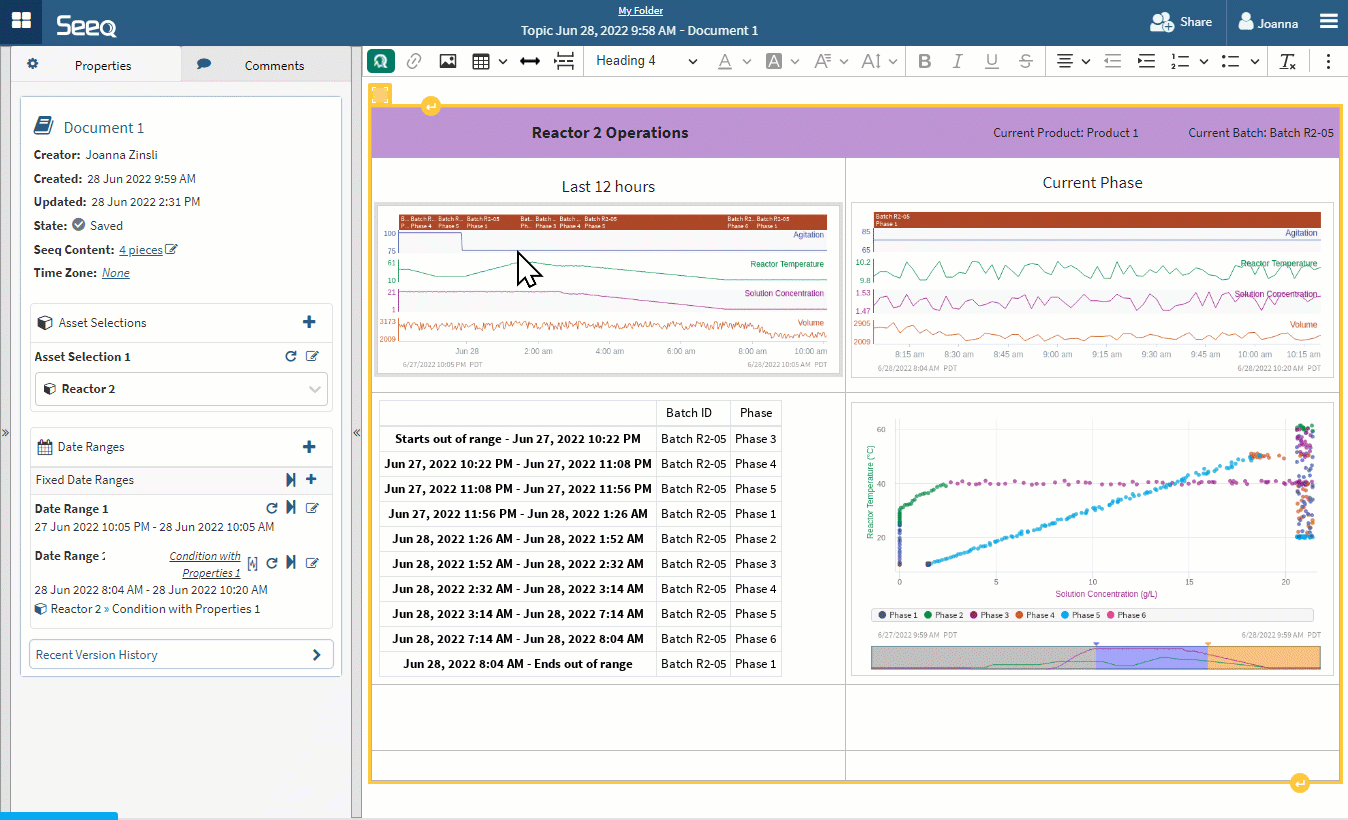What's New?
日本語をサポート
Seeq has added support for Japanese. Edit your profile to see Seeq in Japanese.

Workbench
New View: Compare View
Compare View is a new view that you will find next to Chain and Capsule View. This new view makes it so that you can overlay capsules like in Capsule View, but you can reset the alignment based on capsule properties. A great example of when this could be useful is to compare data across a batch but reset the alignment at the start of each phase.
New Tool: Condition with Properties
The new Condition with Properties tool makes it easy to take string signals and turn them into a condition where each capsule has the values from your string signals as properties. You can use this for one string signal or a group of string signals that have context around the same thing. This can be very useful for things like batch information which is frequently stored as string signals.

Capsules Pane improvements
Several improvements have been made to the Capsule Pane. Duration filtering has been improved so that users can choose what unit of measure to filter by rathern than being limited to just seconds. Filtering based on text now allows you to choose from a pick list rather than typing in the value. You can now add Asset to the capsule pane.


Customizable formatting for string labels on the y-axis
String signal formatting can now be edited by clicking the “i” next to the signal in the details pane and then clicking Override next to String Format. Several options are available such as setting the max number of characters to display or customizing the number of characters to display before and after the ellipsis.

Formula (for more details see What's New in Formula)
Organizer
Interactive Trend Content
We continue to grow the types of Seeq content that is more than an image in Organizer. This release brings hovering over trend content to see values in Organizer. This can minimize your need to click through to Workbench unless you are wanting to add more items to the display. This interactive content is available in Edit, View and Presentation mode.
Seeq is used by many customers to facilitate international collaboration. Interactive Organizer Trends and Scatter Plots allow users to see dates that follow their browser settings, so one user can see MM/DD/YYYY while another viewing the same Organizer on the other side of the world with different preferences can see DD/MM/YYYY.

Bulk Update Includes Interactive Option
Now that several different content types can display as interactive content, you can update multiple pieces at once through the bulk edit modal.

Warning messages for incomplete asset selection
Nobody is perfect, and your asset hierarchy might not be either. You may have been frustrated by occasional red triangles in Organizer when you select an asset that doesn’t have all the items displayed prior to selecting a new asset. Now you will be presented with a yellow triangle and option to show more details regarding which items were not able to display for the new selection (the previous or original items will display instead with the warning. Any items that do exist in the new selection will display. These are accessible in edit, view and presentation modes of Organizer. You can choose to hide the warning messages for each piece of content but the banner will remain that warnings are present.
Read more about these warnings in the Knowledge Base.

Home Screen
More search functionality
In prior versions you could add filters for type and location when searching on the Home Screen. This version brings more control over this search by allowing you to select a folder, creator, or owner to further limit the search. These filters can be independently removed after viewing the search results.

SPy/API Users
SPy Trees
Creating assets trees using SPy no longer requires the use of complex classes and objects. With the introduction of spy.Trees, you can now easily create and modify custom asset trees using Python. Wondering how to use it? Well we’ve reorganized the Documentation Notebooks and the “Asset Trees 1 - Introduction” notebook describes how to get started.
It’s also available on our new Documentation page.

Connectors
Cognite
Seeq can now connect to Cognite Data Fusion via a new native connector. This connector can access Asset Trees and Signals from the CDF platform. More information can be found here: Cognite
Databricks
The SQL V2 connector has been enhanced to provide support for accessing data lake data via Databricks JDBC driver. More information can be found here: SQL Connection Configuration - Seeq Knowledge Base - Seeq Support and Knowledge Base
Administrators
Access Keys can be disabled on individual users by setting the AccessKeyValidityDuration property via the POST /users/{id}/update endpoint to 0 minutes. This configuration takes priority over the system-wide Authentication/AccessKey/ValidityWithoutUserLogin configuration.

Preview features
We keep growing Seeq’s capabilities, but sometimes new features aren’t widely available while we give them a bit more polish. These features are subject to significant change, so know that going in. If you want to try out the leading edge of what is coming next, work with your Administrators to toggle on feature flags.
Display Tool
Imagine being able to easily access a useful view of data. You now can with the Displays Tool. Displays allow you to set custom configurations — colors, styles, lanes, etc. — and have them accessible right in an asset tree. Simply add your favorite visualization directly to an asset tree and scale it across assets in a single click. It is behind a feature flag so please let your Seeq Administrator know you want it enabled.

Read more details in the release notes.

